Potrebujeme váš súhlas na využitie jednotlivých dát, aby sa vám okrem iného mohli ukazovať informácie týkajúce sa vašich záujmov. Súhlas udelíte kliknutím na tlačidlo „OK“.
ASTM D5504-12
Standard Test Method for Determination of Sulfur Compounds in Natural Gas and Gaseous Fuels by Gas Chromatography and Chemiluminescence
Automaticky preložený názov:
Štandardná skúšobná metóda pre stanovenie zlúčenín síry so zemným plynom a plynných palív plynovou chromatografiou a chemiluminiscencie
NORMA vydaná dňa 1.6.2012
Informácie o norme:
Označenie normy: ASTM D5504-12
Poznámka: NEPLATNÁ
Dátum vydania normy: 1.6.2012
Kód tovaru: NS-31483
Počet strán: 12
Približná hmotnosť: 36 g (0.08 libier)
Krajina: Americká technická norma
Kategória: Technické normy ASTM
Kategórie - podobné normy:
Anotácia textu normy ASTM D5504-12 :
Keywords:
chemiluminescence detection, gas chromatography, sulfur compounds, ICS Number Code 75.160.01 (Fuels in general),75.160.30 (Gaseous fuels)
Doplňujúce informácie
| Significance and Use | ||||||||||||||
|
Many sources of natural and petroleum gases contain sulfur compounds that are odorous, corrosive, and poisonous to catalysts used in gaseous fuel processing. Low ppm amounts of sulfur odorants are added to natural gas and LP gases for safety purposes. Some odorants are unstable and react to form compounds having lower odor thresholds. Quantitative analysis of these odorized gases ensures that odorant injection equipment is performing to specification. Although not intended for application to gases other than natural gas and related fuels, this test method has been successfully applied to fuel type gases including refinery, landfill, cogeneration, and sewage digester gas. Refinery, landfill, sewage digester and other related fuel type gases inherently contain volatile sulfur compounds that are subject to federal, state, or local control. The methane fraction of these fuel type gases are occasionally sold to distributors of natural gas. For these reasons, both regulatory agencies and production and distribution facilities may require the accurate determination of sulfur to satisfy regulatory, production or distribution requirements. Fuel gases are also used in energy production or are converted to new products using catalysts that are poisoned by excessive sulfur in the feed gas. Industry frequently requires measurement of sulfur in these fuel type gases to protect their catalyst investments. Analytical Methods—Gas chromatography (GC) is commonly used in the determination of fixed gas and organic composition of natural gas (Test Method D1945). Other standard ASTM methods for the analysis of sulfur in fuel gases include Test Methods D1072 and D4468 for total sulfur and Test Methods D4010 and D4884 for hydrogen sulfide. |
||||||||||||||
| 1. Scope | ||||||||||||||
|
1.1 This test method is primarily for the determination of speciated volatile sulfur-containing compounds in high methane content gaseous fuels such as natural gas. It has been successfully applied to other types of gaseous samples including air, digester, landfill, and refinery fuel gas. The detection range for sulfur compounds, reported as picograms sulfur, is ten (10) to one million (1 000 000). This is equivalent to 0.01 to 1 000 mg/m3, based upon the analysis of a 1 cc sample. 1.2 The range of this test method may be extended to higher concentration by dilution or by selection of a smaller sample loop. Note 1— Dilution will reduce method precision. 1.3 This test method does not purport to identify all sulfur species in a sample. Only compounds that are eluted through the selected column under the chromatographic conditions chosen are determined. The detector response to sulfur is equimolar for all sulfur compounds within the scope (1.1) of this test method. Thus, unidentified compounds are determined with equal precision to that of identified substances. Total sulfur content is determined from the total of individually quantified components. 1.4 The values stated in SI units are standard. The values stated in inch-pound units are for information only. 1.5 This standard does not purport to address all of the safety concerns, if any, associated with its use. It is the responsibility of the user of this standard to establish appropriate safety and health practices and determine the applicability of regulatory limitations prior to use. |
||||||||||||||
| 2. Referenced Documents | ||||||||||||||
|
Podobné normy:
Historická
15.4.2012
Historická
15.6.2013
Historická
24.4.2012
Historická
1.10.2011
Odporúčame:
EviZak - všetky zákony vrátane ich evidencie na jednom mieste
Poskytovanie aktuálnych informácií o legislatívnych predpisoch vyhlásených v Zbierke zákonov od roku 1945.
Aktualizácia 2x v mesiaci !
Chcete vedieť viac informácii ? Pozrite sa na túto stránku.


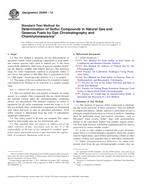
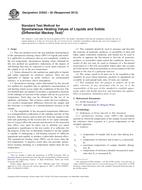 ASTM D3523-92(2012)..
ASTM D3523-92(2012)..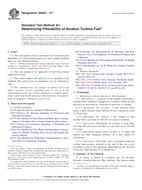 ASTM D6824-13e1
ASTM D6824-13e1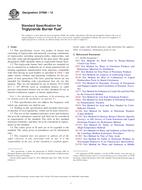 ASTM D7666-12
ASTM D7666-12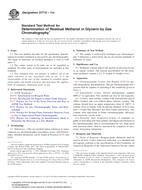 ASTM D7716-11a
ASTM D7716-11a
 Cookies
Cookies
